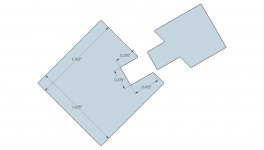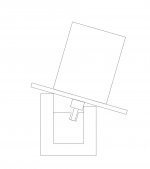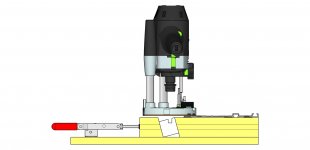deepcreek
Member
- Joined
- Apr 20, 2009
- Messages
- 1,000
I need to make an angled dado in a table leg to accept a 3/8" panel.
It is set at a 75 degree angle to the face of the leg.
Please note it is actually a stop dado on both ends so I can't use a table saw.
I'm thinking I should cut it with a router but I'm not sure how.
I have a 1010, 1400, and 2200.
Any suggestions?
Thanks!
Joe
[attachimg=1]
It is set at a 75 degree angle to the face of the leg.
Please note it is actually a stop dado on both ends so I can't use a table saw.
I'm thinking I should cut it with a router but I'm not sure how.
I have a 1010, 1400, and 2200.
Any suggestions?
Thanks!
Joe
[attachimg=1]




